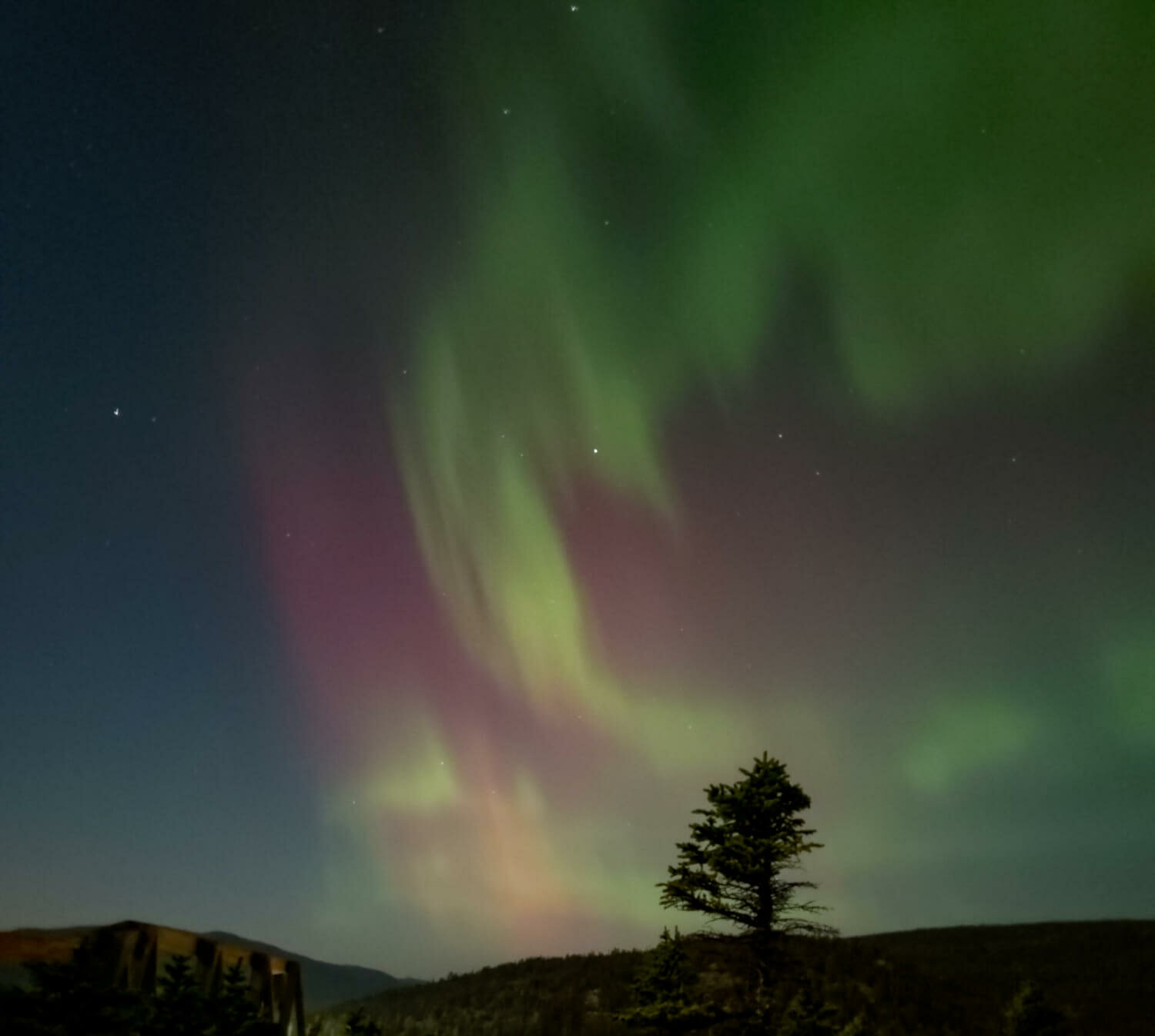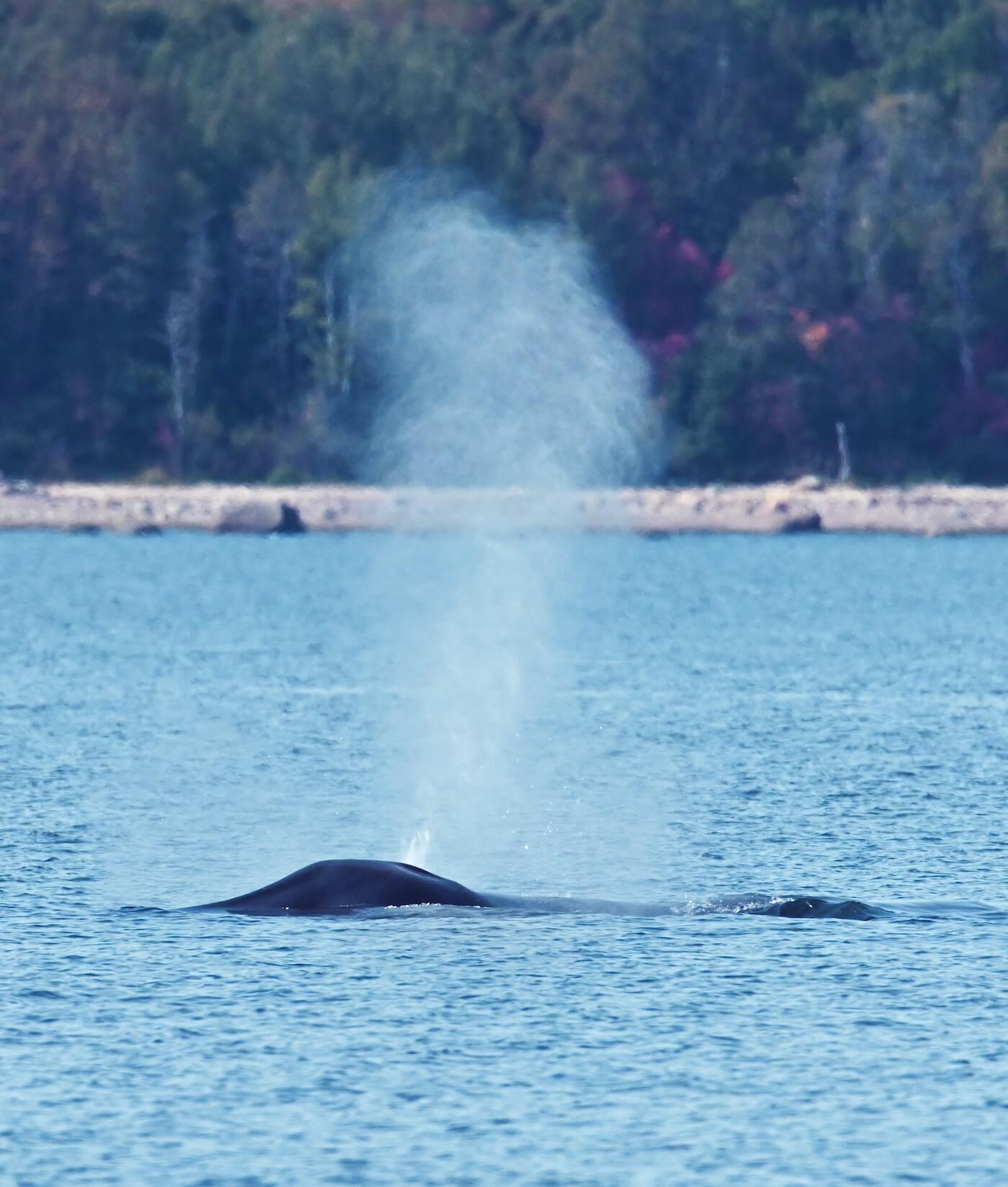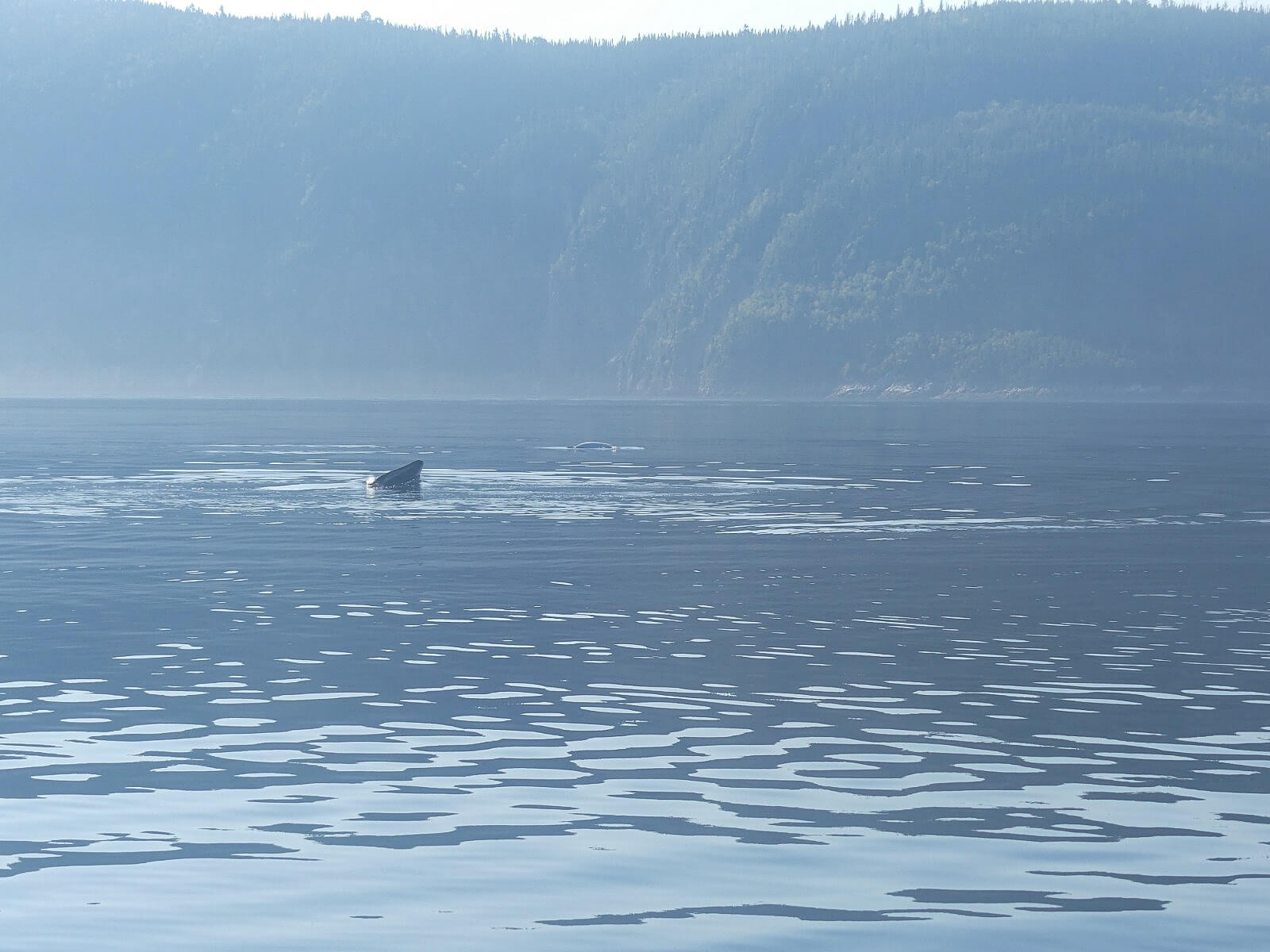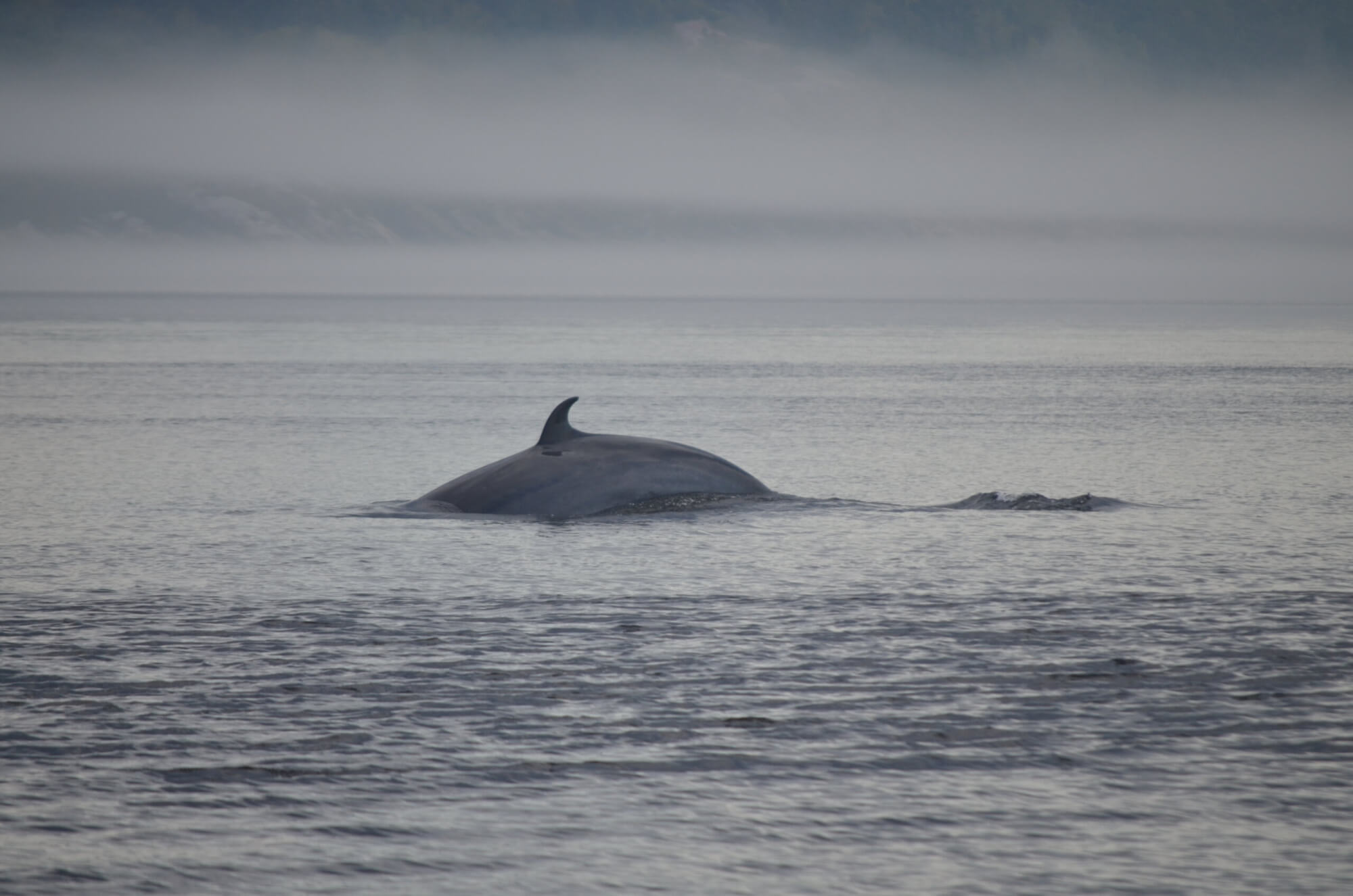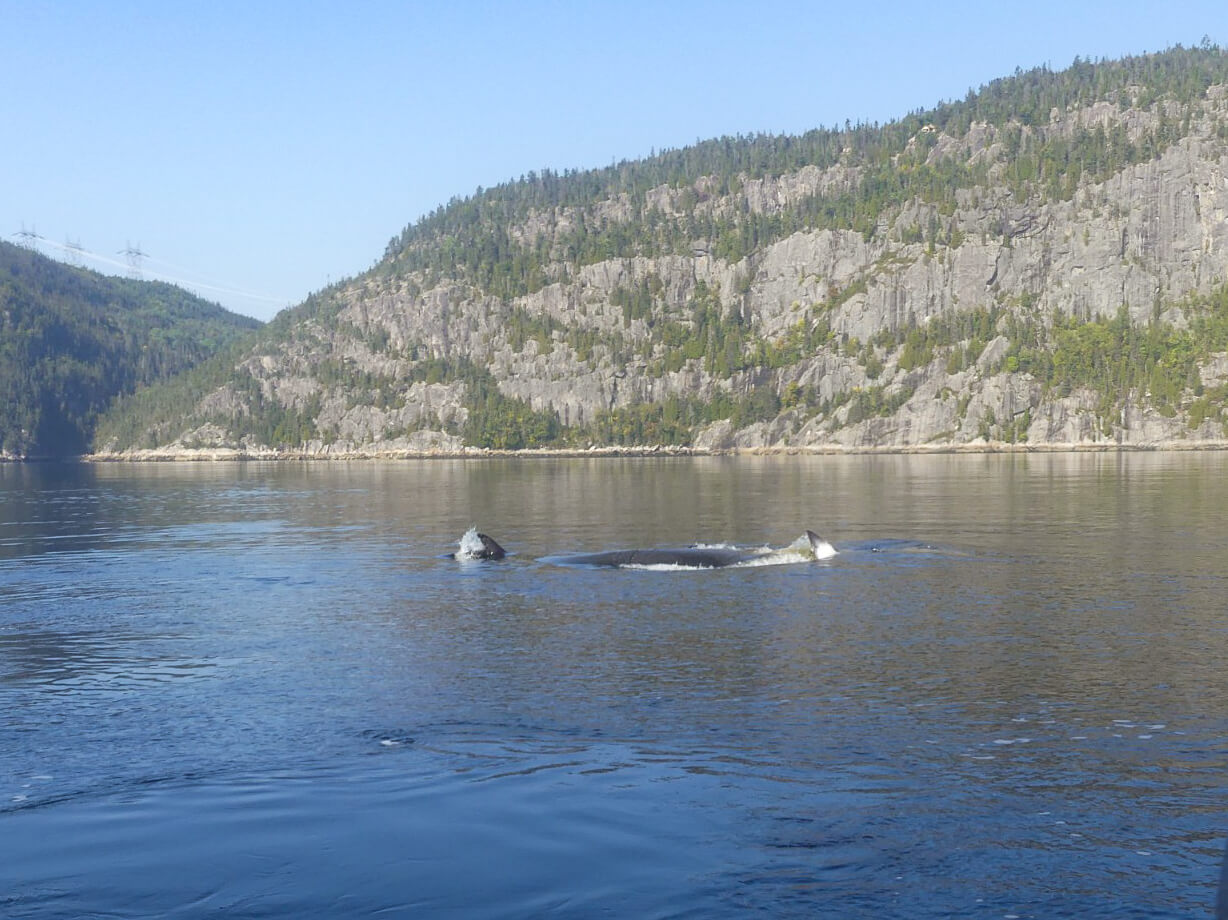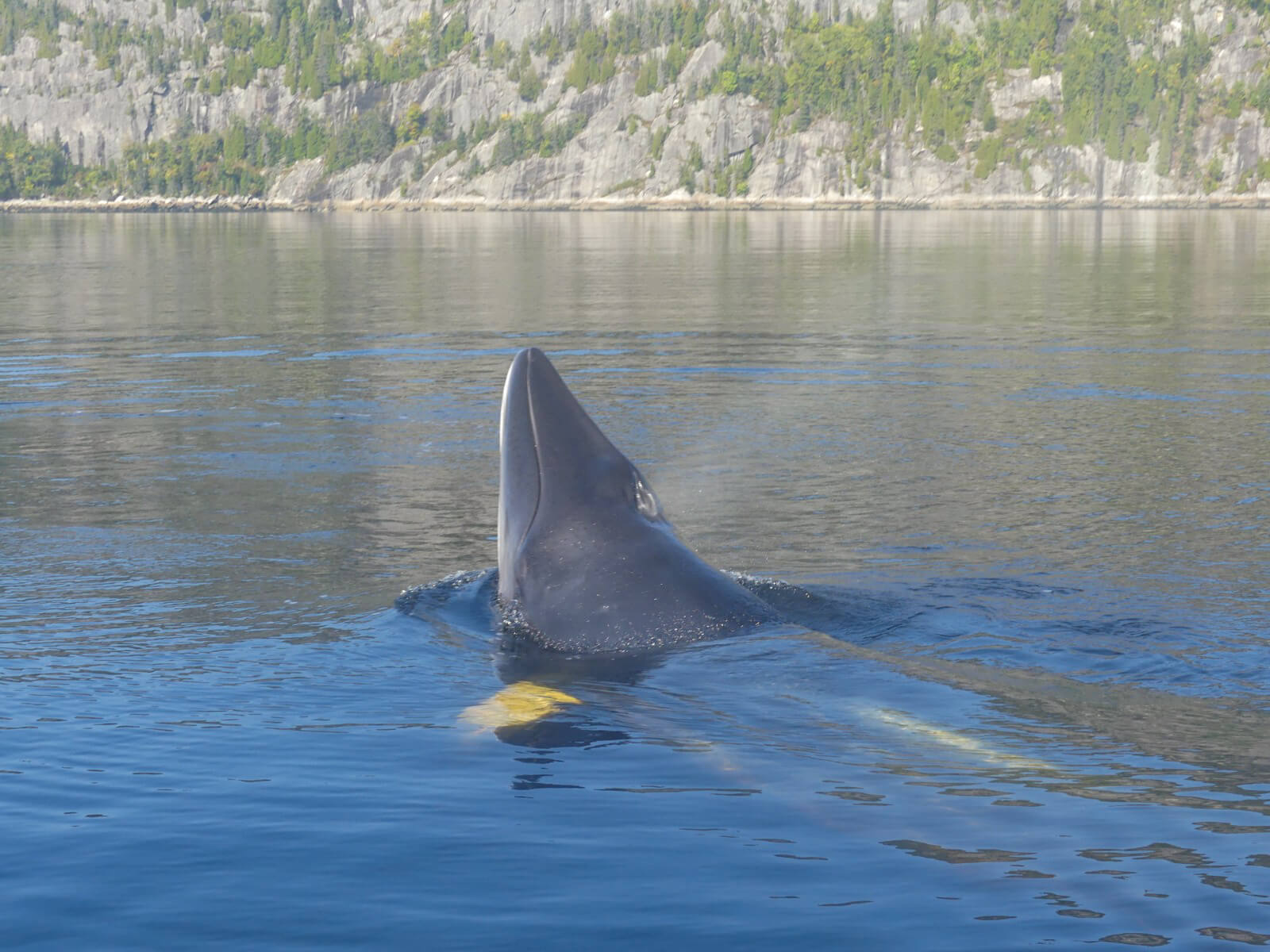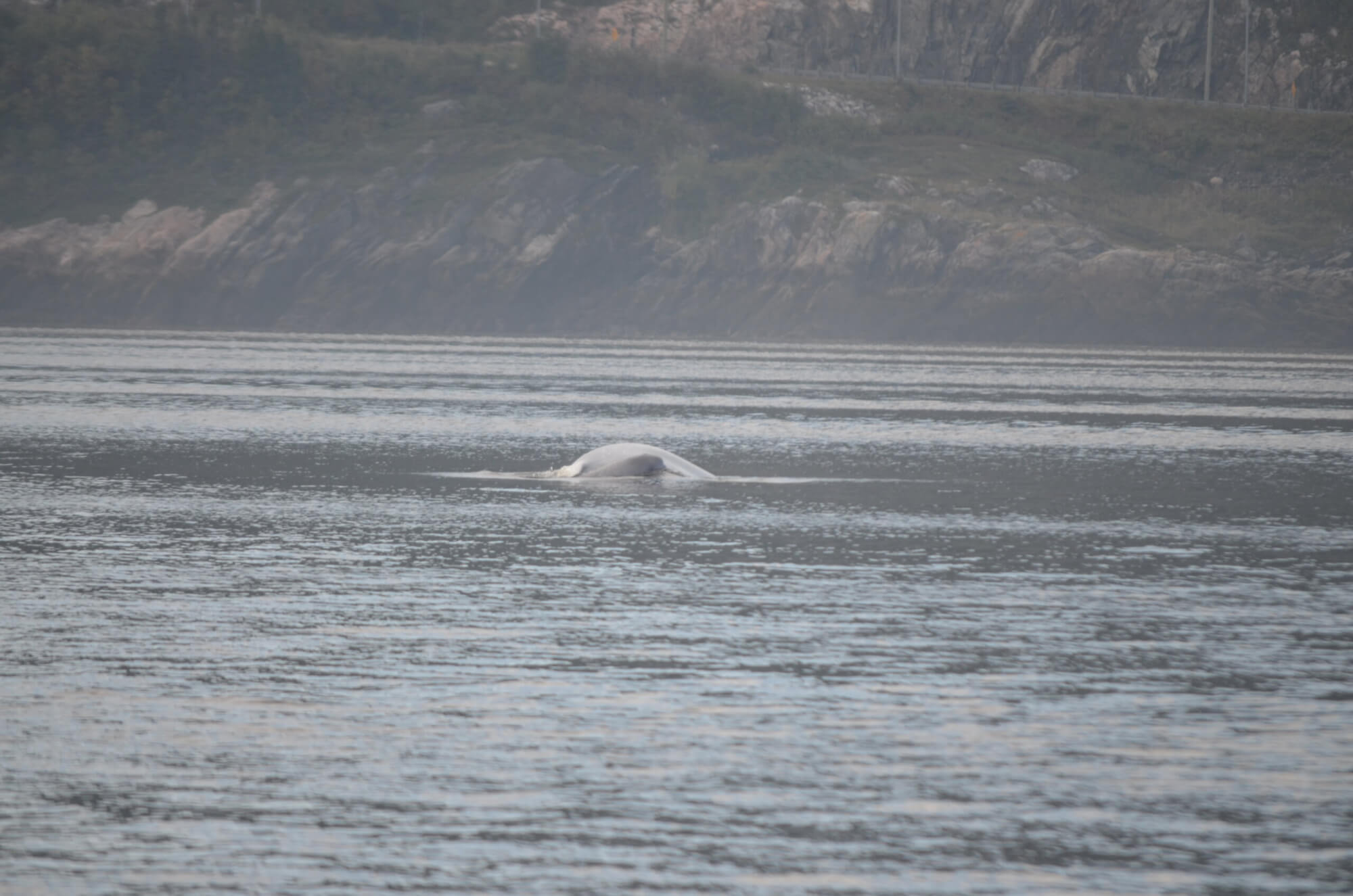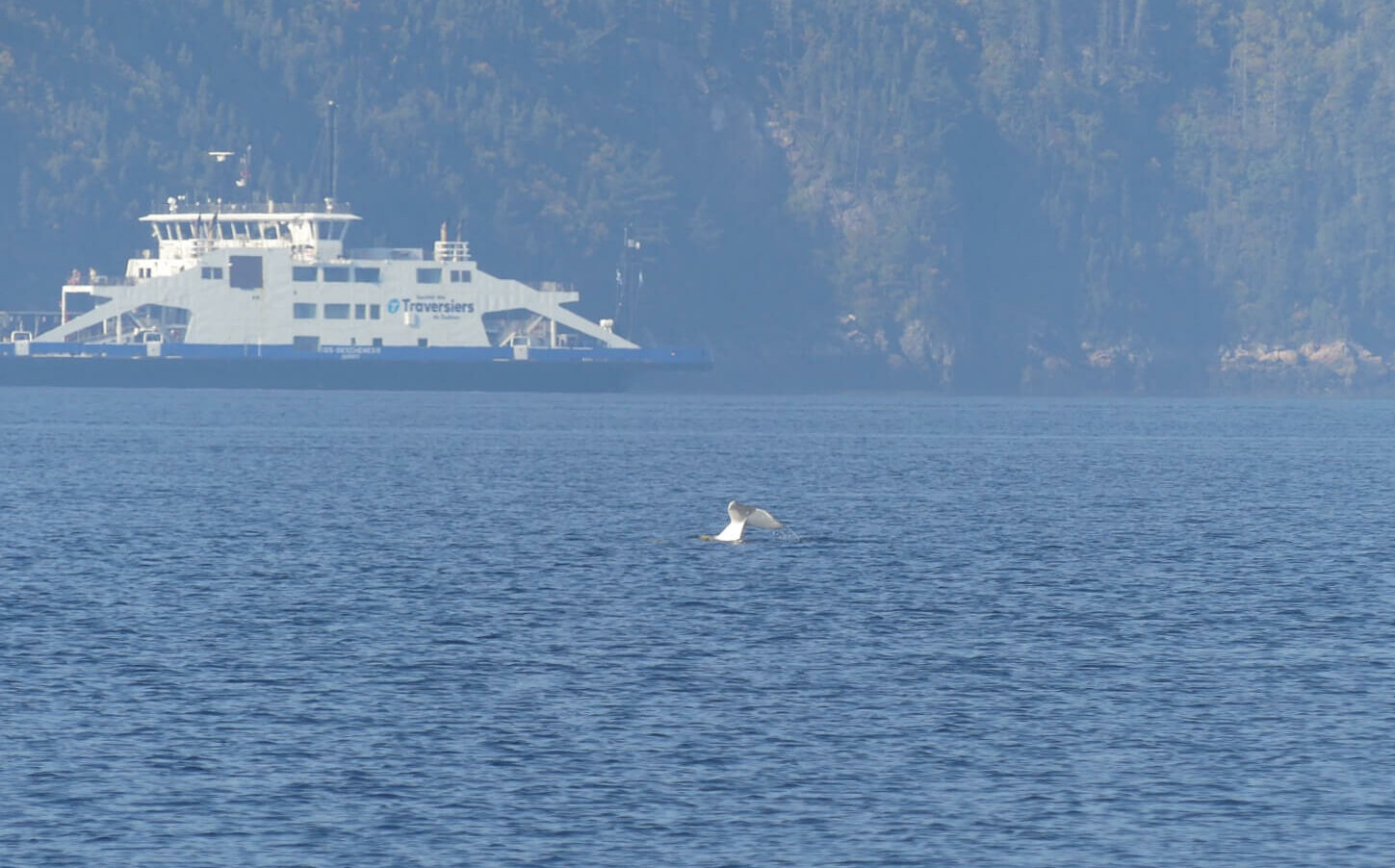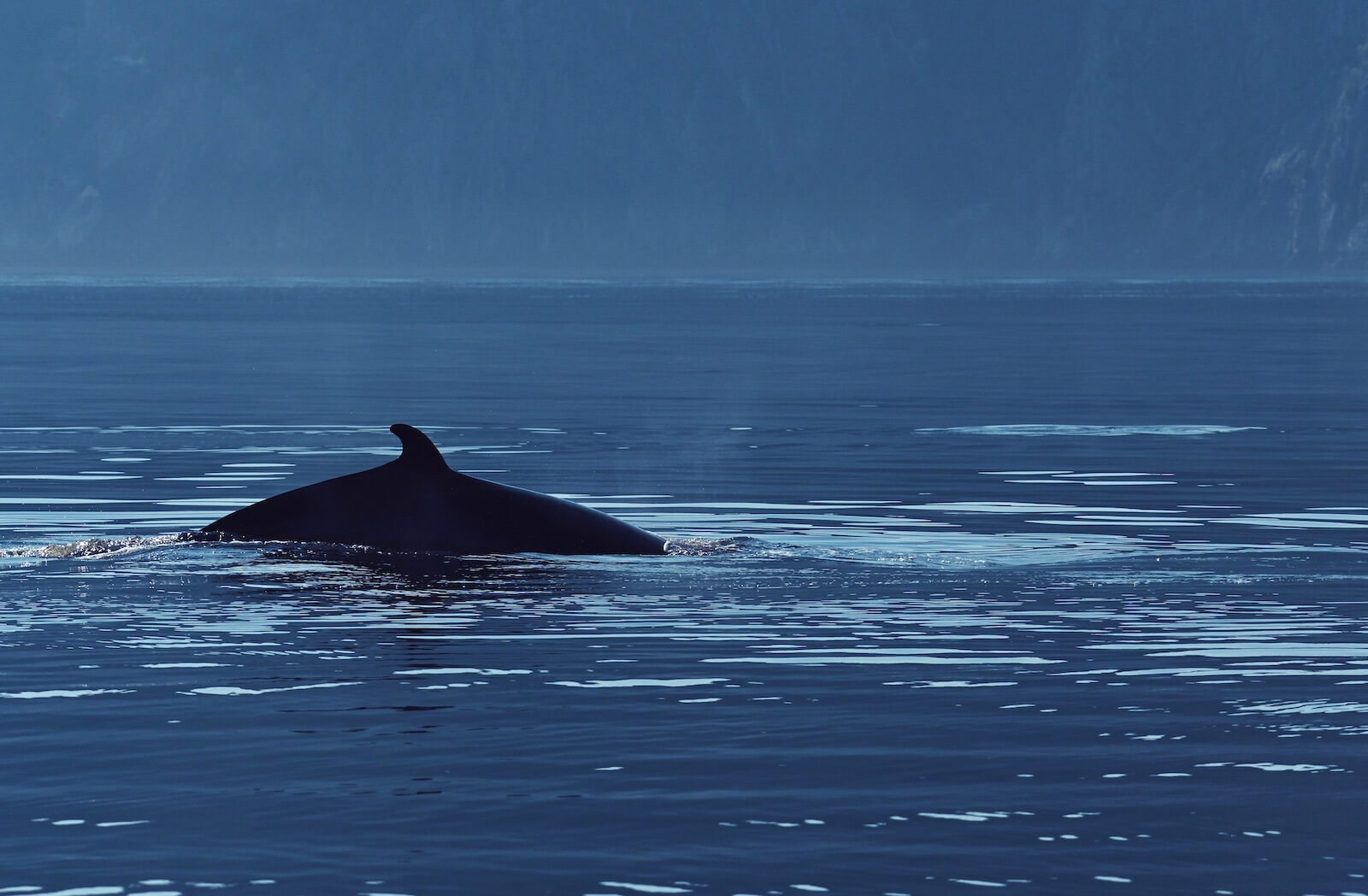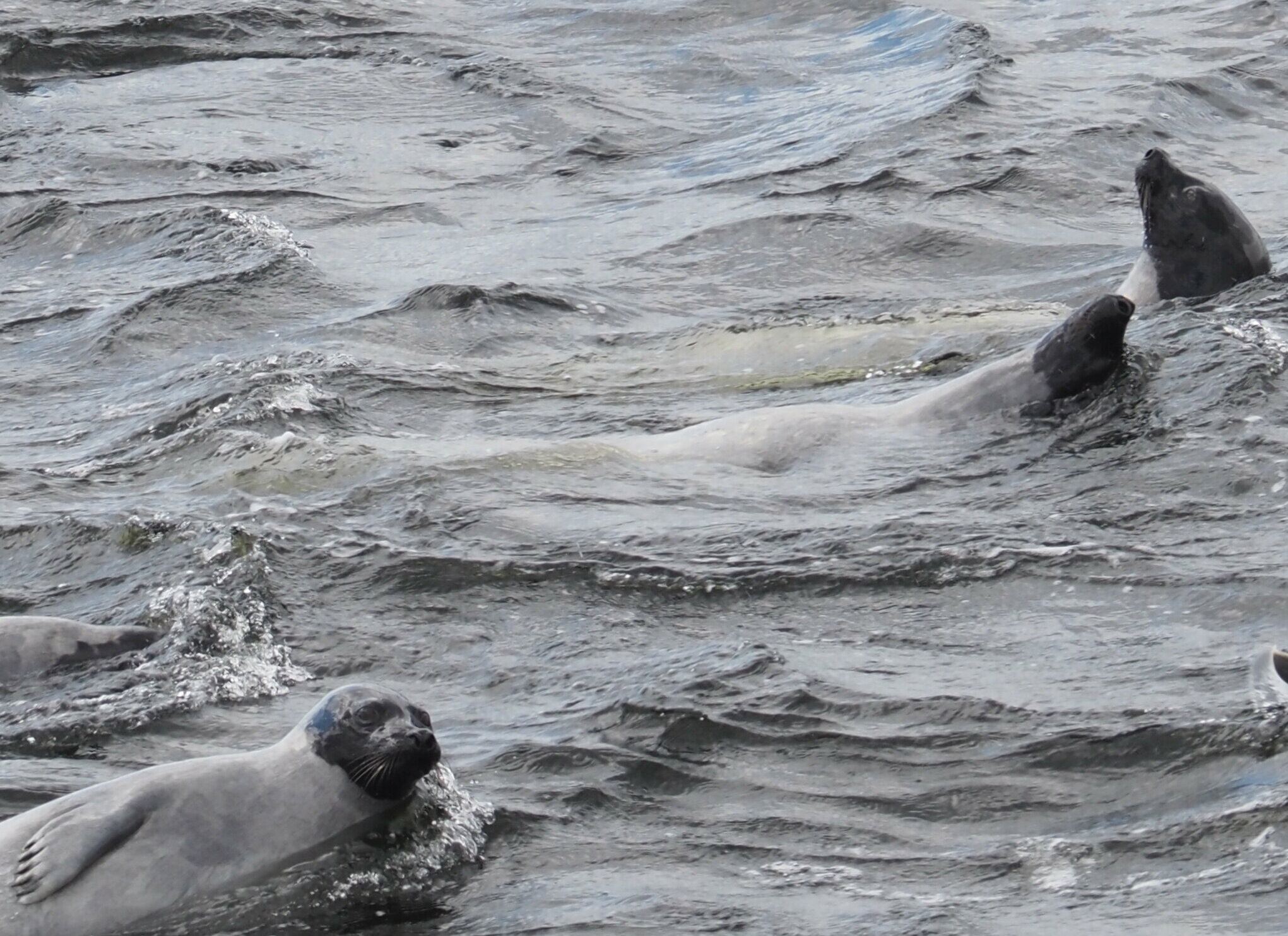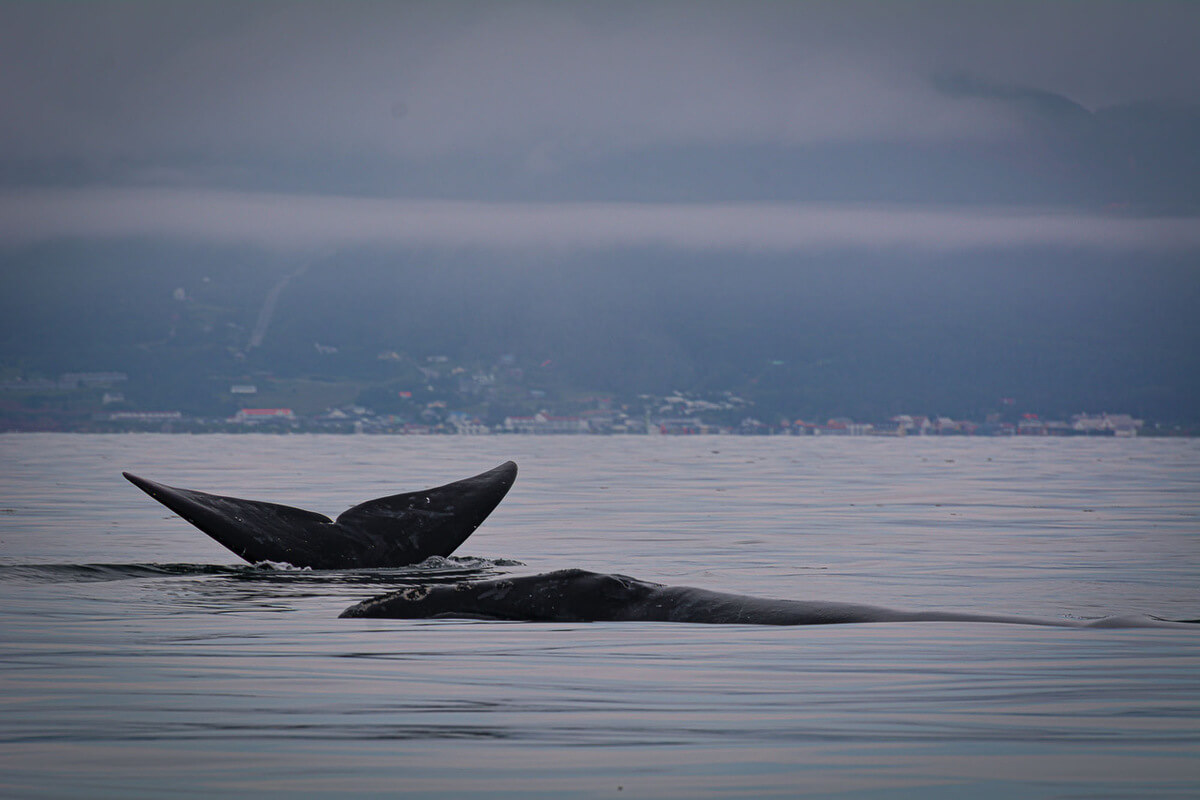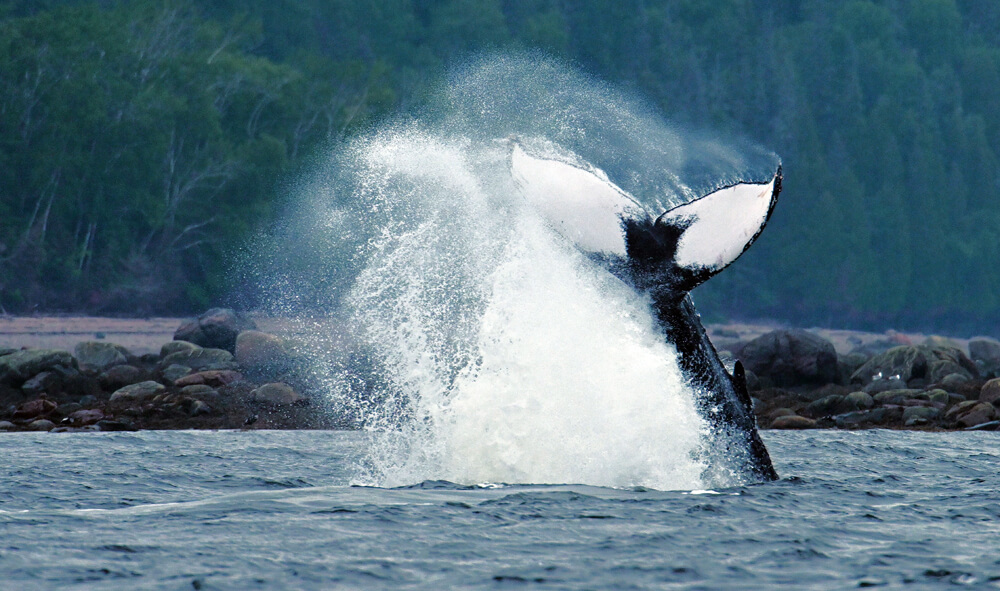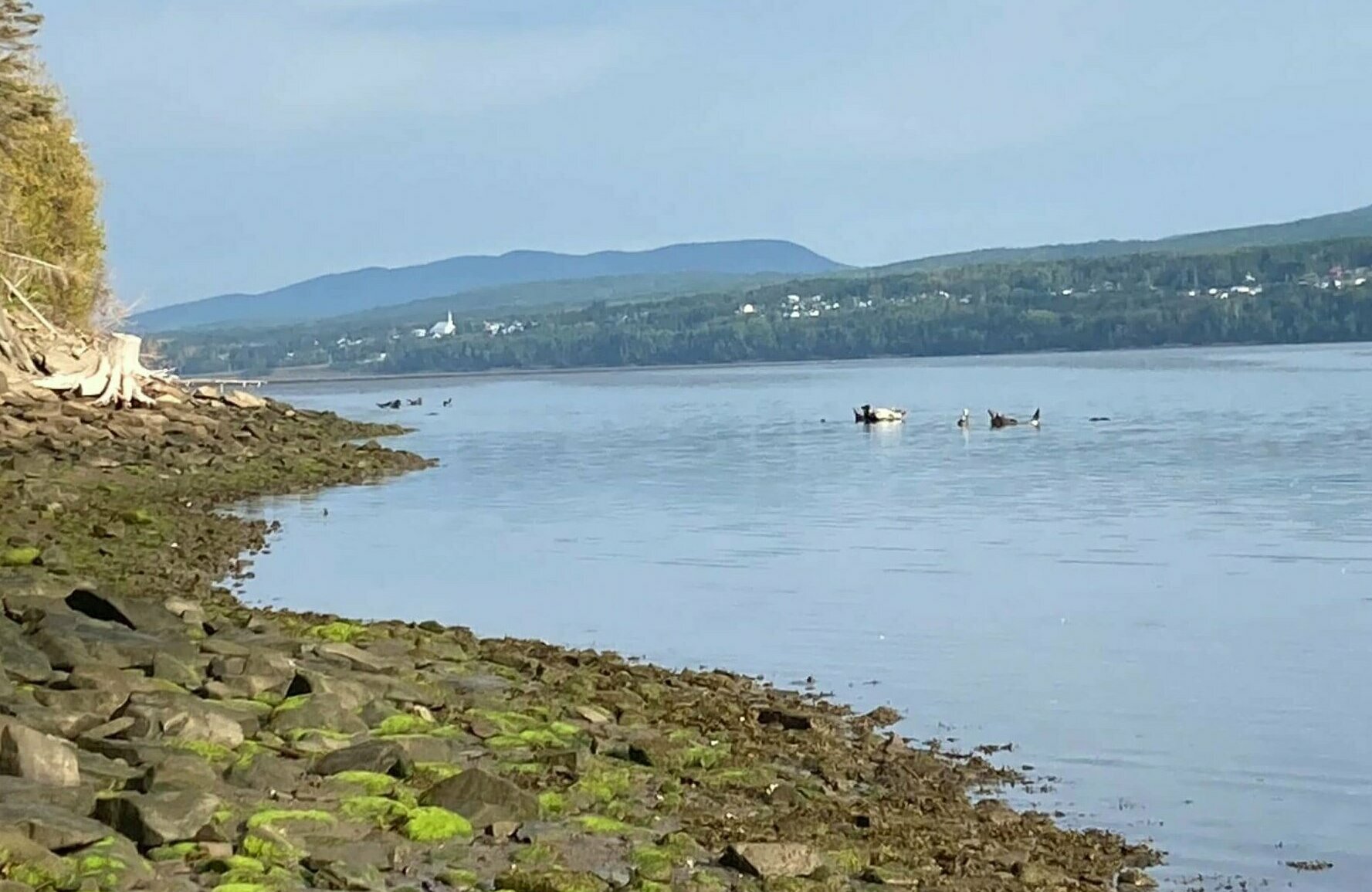This week was marked by blue whales in the estuary, belugas in Cap-aux-Oies, right whales in the Mingan sector, harbour porpoises in Sept-Îles, a slew of minke whales in Franquelin and just as many cetaceans in Gaspésie! In Tadoussac, minke whales and belugas have been stealing the show with their amazing feeding behaviours. Making this scene all the more enchanting was the aurora borealis display that lit up the Quebec sky a few days ago. A paradise every bit as present on land as it is at sea.
Running with whales
Last Saturday, an Haute-Côte-Nord resident ran in the fifth edition of the Béluga Ultra Trail, where she enjoyed a pleasant encounter: “When we reached Pointe de l’Islet, there were belugas in the mouth of the Saguenay and opposite Tadoussac Bay! It was a good way to end a race that otherwise took a heavy toll on my knees!” she shared. Thanks to a record turnout, event organizers made a donation to the Group for Research and Education on Marine Mammals (GREMM) to support the adoption of their three belugas.
Oblong glee
In La Haute-Côte-Nord, a new wave of humpbacks is on the horizon with the arrival of Inuksuk (H811), Sensor (H904) and Galaxie (H916), all of which were spotted in recent days. The marbled fin whale Bp903 was also seen cruising through our turbid waters. Equally noteworthy is the return of humpbacks H929 (Éline) and H919 (Pixel/Titlo), as well as fin whales Zipper (Bp097) and Orion (Bp017) in our binoculars!
Five blue whales graced the estuary with their presence, including one that ventured as far upstream as the mouth of the Saguenay Fjord! Pléiades (B197), Torishinto (B112) and Bird of Prey (B261) seem to be enjoying themselves here, as they are still in the area after several days. Later joining the ranks of these three individuals were the venerable male B311 and the nomadic Swoosh (B348). Swoosh is a stealthy blue whale and this is only his second visit to the waters of the Saguenay-St. Lawrence Marine Park. Identified in 1997 by the Mingan Island Cetacean Study (MICS), his almost pearly body was reported in the Gulf in 2000, 2006, 2014 and 2018.
Unforgettable serendipity
Posted on the rocky outcrop in front of the Marine Mammal Interpretation Centre (CIMM) in Tadoussac, a few lucky observers were dazzled by a number of spectacular pirouettes. One enthusiast shares: “We witnessed an incessant spectacle of minke whales and families of belugas crisscrossing the waters of the Saguenay in search of food. We could hear the whales blowing as they came to the surface before taking another dive.” In-between their pectoral/tail slapping and their breaches, minke whales were taking huge gulps of fish, their ventral grooves distended. “A grandiose and soothing display that unfolded with a certain languor, making their performance all the more majestic,” recalls the observer. One naturalist even caught a glimpse of a few belugas swimming just above a minke whale before the latter emerged from the waves. Adding to this picturesque scene was a harbour seal that may have been wondering what indeed was going on there.
One nature lover went to Pointe-Rouge with her family to watch the sunset and the moonrise. Imagine their amazement when a large group of belugas came right up to the foot of the rocks! “We could hear their breaths and see them through the clear water; it was crazy!” […] Then they left, swimming along the moonlight’s reflection on the St. Lawrence! There were also three small seals in the setting sun.” The St. Lawrence is truly full of living wonders.
Observations in the North
Activity is picking up again in the Baie-Comeau region with minke whales as well as some of their larger cousins. A passionate North Shore resident saw six swirling minke whales in the same place as well as his first bluefin tuna of the season, which he was able to observe leaping out of the water! A few humpbacks have paraded by in recent days, in addition to a mysterious whale that’s been puzzling even the most seasoned observers! Is it a small blue whale or a large humpback that’s not showing its dorsal fin or its tail? Opinions are divided, but it is probably a large humpback observed alongside a smaller individual.
In the Pointe-des-Monts / Gallix area, a few grey seals and minke whales were spotted, though residents are patiently waiting for larger cetaceans to arrive.
In Sept-Îles, a mariner was able to admire two blue whales, a fin whale, two minke whales and a few hundred harbour porpoises!
A haven for Nordic visitors
Amongst the sometimes misty islands and monoliths of the Mingan islands, naturalists have spotted harbour porpoises, minke whales and several harbour and grey seals. However, it was newcomers who charmed the spirits of tourists and residents alike.
Under glorious sunshine, a pod of harp seals surprised tourists scanning the waters for whales. At the beginning of September, harp seals begin their seasonal migration over thousands of kilometers from the Canadian Arctic and Greenland, through the waters of northern Newfoundland, southern Labrador and the Gulf of St. Lawrence.
Right whales abound in Mingan sector
Farther offshore, MICS had a busy week. In Jacques Cartier Strait, about twenty North Atlantic right whales, including calves, were observed by scientists. In fact, 16 individuals were tallied in a single day! Right whales were not the only ones present: the humpback whale Splinter (H638) and fin whale Curly (F002) were also spotted.
The North Atlantic right whale is a rare species and still endangered despite international protection established by the League of Nations in 1935. The species was even thought to be extinct until scientists noticed a few individuals in Cape Cod Bay in the 1950s.
Explosion of life on the south shore
While visitors were able to quietly admire belugas from the observatory in Cacouna, a humpback whale was lobtailing in Saint-Anne-des-Monts. During this behaviour, the purpose of which is still poorly understood, the cetacean vigorously thrusts its tail fin to the side while striking the water surface. A completely different experience, but one that is also astonishing in its own way!
Farther north, in the town of Gaspé, there have been so many whales that observers have lost count. Humpbacks, fin whales, white-sided dolphins, harbour porpoises and minke whales fuel conversations and bring with them emotion and excitement.
A local resident was also able to photograph harbour seals in Gaspé Bay: “A dozen harbour seals […] in addition to the three ‘regulars’ occupying their rocks at the other end of the bay. I’ve never seen so many seals here!”
Live from Nova Scotia
A member of the Group for Research and Education on Marine Mammals (GREMM) team sent us a sighting she made in Nova Scotia. On a cool fall morning, she saw about fifteen grey seals as well as pilot whales! The long-finned pilot whale is a summer resident of the Gulf of St. Lawrence, especially the Gaspé Peninsula and the east coast of Newfoundland. However, little is known about this species. In the St. Lawrence, this population is estimated at 1,600 individuals (as per aerial surveys conducted in the Gulf in 1995).
Paradise of the blue desert
No matter where one is along the banks of the St. Lawrence, the pastel waters these past few days are worth contemplating with serenity. One never tires of the beauty of this scene and the hints of salt in the air carried by the gentle offshore breeze. The waters of the St. Lawrence still sparkle with a myriad of marine mammals of all sizes, shapes and colours. Let’s take the time to stop and take a deep breath, because we’re in paradise here!
Where are the whales this week? Observation map
These data were reported by our network of observers. They give an idea of the presence of whales and in no way represent the actual distribution of whales in the St. Lawrence. Just for fun!
Click on the whale or seal icons to discover the species, the number of individuals, additional information or photos of the sighting. To enlarge the map, click on the icon in the top right-hand corner. The map works well on Chrome and Firefox, but not so well on Safari.
To display the list of sightings, click on the icon in the top left-hand corner.
Thanks to all our collaborators!
Special thanks go out to all our observers who share their love for marine mammals with us! Your encounters with cetaceans and pinnipeds are always a pleasure to read and discover.
On the water or from shore, it is your eyes that give life to this column.
Célia Baratier
Anik Boileau
Odélie Brouillette
Michel Comeau
Guylaine Côté
Thalia Cohen Bacry
Jean-Philippe Cohen Bacry
Patrice Corbeil
Laetitia Desbordes
Andréanne Forest
Paule Goulet
Helene Lahaie
Jade-Audrey Lavergne
Yael Medav
Élizabeth Melis
Diane Ostiguy
Chloé Pazart
Renaud Pintiaux
Pascal Pitre
Mathilde Potvin
Jean Roy
Marielle Vanasse
Additionally, we would like to acknowledge the following teams that also share their sightings:
Sept-Îles Research and Education Centre (CERSI)
Group for Research and Education on Marine Mammals (GREMM)
Marine Mammal Observation Network (MMON)
Quebec Marine Mammal Emergency Response Network (QMMERN)
Mingan Island Cetacean Study (MICS)
Would you also like to share your observations?
Have you seen any marine mammals in the St. Lawrence? Whether it’s a spout offshore or just a couple of seals, drop us a line and send your photos to [email protected]!



